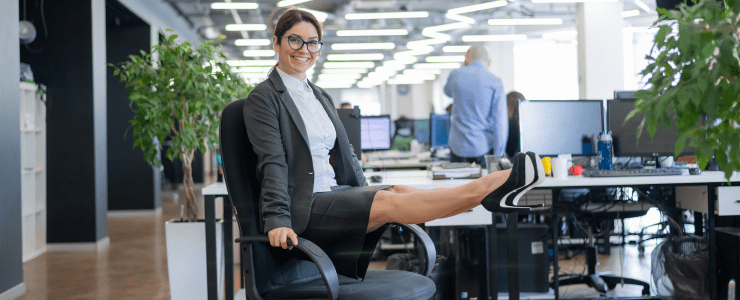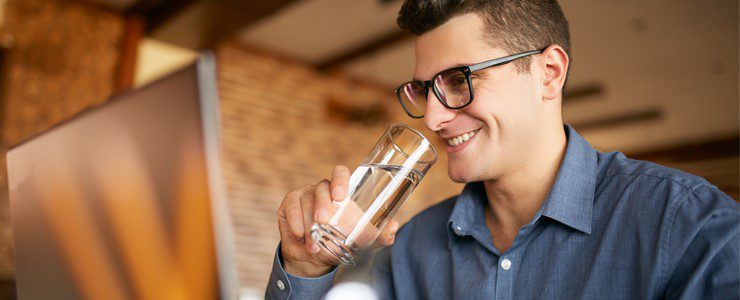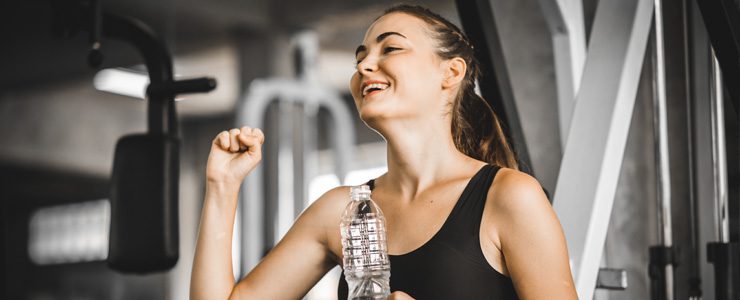
Chair Pilates: What is it and how does it work?
Chair Pilates is a form of exercise that is growing in popularity in the UK, particularly because it’s ideal for people of all ages, fitness levels and abilities.
Providing both physical and mental health benefits, a Pilates chair workout is something modern workplaces have started offering to boost employee wellbeing.
Pilates is a type of exercise practiced by more than 12 million people worldwide, according to data from 2023.
The chair apparatus has been in existence for more than 90 years. However, it was largely overlooked until the 21st century, when it took off in a big way.
History of Pilates
Pilates was invented by German physical trainer and inventor Joseph Pilates, whose mother and father were a naturopath and a gymnast respectively.
Born in Mönchengladbach in 1883, Joseph was a sickly child who had rickets, asthma and rheumatic fever, so he began trying to improve his strength under his father’s guidance. Thanks to bodybuilding, martial arts, gymnastics and boxing, Joseph was in great shape by the time he was 14.
His own experiences led him to believe poor lifestyle, posture and breathing were at the root of ill health. He dedicated his life to improving the population’s health and devised training exercises and techniques using equipment he had designed and manufactured himself.
In 1925, Joseph met and married Clara and the couple settled in the United States, founding a health studio in New York City, where they taught the exercise technique that became known as Pilates.
Joseph believed your health determined how old you felt, living by the ethos that if your spine was inflexible by the age of 30, you were old, but people still supple at 60 had remained young.
What is Chair Pilates?
Chair Pilates evolved as part of the couple’s exercise regimes, using a special chair that Joseph had designed and patented in February 1930. Resembling a reclining chair that could be rotated until the backrest touched the floor, it was the first piece of functional apparatus for a home gym that would convert into a normal chair when not in use. It had springs attached to a pedal, so the user could sit with their legs over the part that had folded over, while pressing down on the footrest, which had spring-tension.
In 1945, it evolved into the Wunda Chair and became an integral part of the Pilates workout in the United States.
Joseph published two books – A Corrective System of Exercising in 1934 and Return to Life Through Contrology in 1945 – to explain his methods.
After he died in 1967, his work carried on and the first UK Pilates studio was launched in 1971. However, Chair Pilates wasn’t hugely popular at first. Research suggests it has been taught in Britain only since the late 1990s.
Around 50 different exercises can be used in a Pilates workout, whether you’re standing or sitting, with the majority being repetitive and aimed at spurring muscle exertion. Each has core goals, which include improving breathing, rib stabilisation and using the abdominal muscles.
In 2012, a review of the discipline described it as being a “mind and body exercise” aiding flexibility, strength, core stability, posture, breathing and muscle control. It can be designed to suit a variety of fitness goals for people of all ages and abilities, placing an emphasis on creating a stronger connection between the body and mind.
Benefits of exercise at work
Taking time out to exercise at work has been recognised as highly beneficial in the 21st century. Many studies have noted the important effects of exercise on physical and mental health. It can help people to feel more focused and productive, while encouraging a positive attitude and a greater ability to cope with stress. This is partly because of the endorphins our body releases when exercising, which can aid mental wellbeing and reduce blood pressure.
When considering which exercises to do at work, Chair Pilates is increasing in popularity. In fact, Headspace Group offers this as part of our community events programme, along with numerous other organised classes to support physical and mental health. In addition, if you’re feeling jaded and have a spare ten minutes, there are several Chair Pilates exercises you can do at your own desk.
This is where being based in a flexible coworking environment has a major advantage over a traditional office, as you won’t feel out of place if you practice simple Pilates exercises such as side bends, seated roll downs and chest lifts while sitting on your chair.
Experts say you should start to feel the benefits of regular Chair Pilates sessions after five or six weeks, when you may notice you have greater endurance and stamina, and perhaps better still, you might start to feel less stressed.
© Reshetnikov_art / Shutterstock.com



